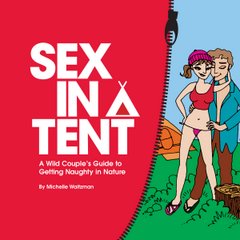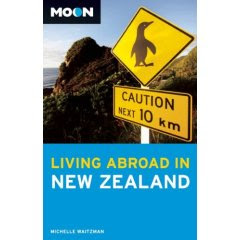 Above the Waiohine River in the southern Tararuas
Above the Waiohine River in the southern TararuasEven though it is officially summer, the weather in the Tararua ranges is always a bit of a crapshoot. Since we were off for almost 2 weeks for the Christmas/New Years holidays, we kept an eye on the forecast and decided to go tramping for three days starting December 27.
We arrived to pleasant, sunny weather on our first day. The campground at Waiohine Gorge Roadend was bustling, as you would expect at this time of year. But we were determined not to repeat last year's mistake of getting stuck in overcrowded huts, so we brought our tent along and decided we'd avoid the huts altogether.
Our trip started with a big, steep climb up to (almost) Cone Saddle. It's strange how I can go to the gym several times a week, and still be immediately out of breath as soon as I have to tramp uphill with a pack on! Oh well, I don't think I could deal with the strange looks if I started showing up at the gym with a loaded backpack.
The sun was thankfully having a hard time penetrating the tree cover, so we were sweaty, but not unbearably hot. And the last part of our tramp for the day was a descent down the opposite side of the ride past historic Cone Hut.

Cone hut is very basic, and only has bunks for 6 people at best. I was glad we weren't planning to stop there for the night, because a group of 6 (plus one dog) showed up just behind us. They weren't too sure about staying in the "well preserved" hut either, and at least one couple opted to sleep nearby in their tent instead.
We continued down to Smith Creek, where there is a relatively well established camping area. (No facilities though.) We picked a flattish, sheltered spot and set ourselves up in the tent. I had a bit of a wipe down by the river, but had to be a bit subtle because the Cone Hut group were also lounging down there.
The evening was very pleasant, and we were quite pleased to be on our own, away from the hordes.
Overnight it began to rain, and we avoided getting up in the morning as we tried to use our sheer will to make it stop. Eventually we had to give up hope, and have breakfast in the light drizzle. We packed up the wet tent, and headed back up the hill to Cone Saddle.
The rain stopped and started all day, making everything wet and a bit slippery. Both of us lost our footing now and then on a bit of mud or a slick tree root. Nothing major though. It was one of those days where you can never quite decide whether to keep your rain jacket on, or take if off. Either way you're going to end up damp - either from drizzle or from sweat.
We descended back over to the Waiohine Gorge side of the ridge, and decided to camp at a small spot by the river. Our original plan was to follow the river trail up to Totara Flats, and camp closer to the hut. However, there was a fairly large stream to cross first, and with the rain it was not very appealing to me. With a perfectly good campsite on our side of the stream, I opted to stay there (and G humoured me.)

The drizzle wouldn't relent, so we basically spent the entire time inside the tent until morning. It had dried overnight, but the wind had picked up too. However, I was happy to be out of the tent, and I really liked the little ferns that were growing all over the trunk of the tree fern by our tent.

We packed up and headed back along the Waiohine Gorge towards the road end. The trail seemed longer than it looked on the map - but perhaps I'm in worse shape than I like to think!
The sun had returned, so although it was windy we had pretty pleasant walking conditions. There was a lot of mud from the previous day's rain though, so we probably went slower than usual trying not to sink ourselves in too much.
There was one big stream crossing on the way back. Most people rock hop over it without too much trouble. But as I've pointed out before, stream crossings and I don't get along very well. I made it about 3/4 of the way across from rock to rock, then got to a place where it was too far for me to step or hop.
I decided I would have to step into the stream with one foot, then climb up onto the last rock. It seemed like a good plan, but my execution was somewhat flawed. I didn't step far enough up onto the rock, and instead tried to put my weight onto the mossy, slimy side of the rock. Needless to say I slipped, banging my knee on the rock. I wasn't hurt (other than a bit of a scrape and a bruise) but I was very frustrated and pissed off at myself for doing this yet again! You'd think I'd get better at it with experience, but somehow I just keep on messing it up.
Anyway, the rest of the walk out was pretty uneventful. I had an ice cream in Greytown to drown my sorrows on our way back to Wellington. Within a couple of days the weather turned and the Tararuas have had strong wind and heavy rain warnings since New Year's day. So it looks like we lucked out, with just one drizzly day.
 Untouched beauty - for now
Untouched beauty - for now











